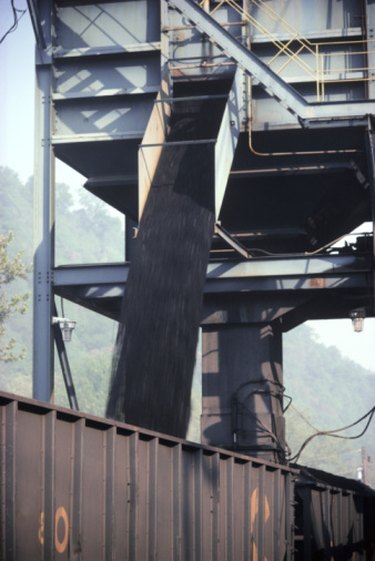
Greenhouse gases are naturally-occurring and man-made compounds that trap heat around the Earth, making temperatures warm enough to sustain plant and animal life. When too many of these gases go into the Earth's atmosphere, it can result in an increase in global temperatures that is known as the greenhouse effect.
Carbon Dioxide
Video of the Day
Carbon dioxide, or CO2, is a greenhouse gas that is emitted by the natural carbon cycle and by human activities, such as burning fossil fuels, notes the Environmental Protection Agency (EPA). Normally, CO2 gas emitted into the atmosphere is removed in roughly equal amounts by oceans and plants. However, since the 1700s, humans have put CO2 in the atmosphere at a faster rate than it can be removed naturally. In 2005, there was about 35 percent more carbon dioxide in the atmosphere than there was before the Industrial Revolution, which has contributed to a rise in average global temperatures.
Video of the Day
Methane
Methane -- or CH4 -- is a main component of natural gas. It is also a greenhouse gas that affects climate. The US Climate Change Science Program, or CCSP, states that methane is 20 times more effective in trapping heat in the atmosphere than carbon dioxide. Because methane also has a life of 9 to 15 years, reducing methane emissions could help to reduce global warming in a short period of time. About 60 percent of methane emissions worldwide come from human sources such as landfills, agricultural activity and coal mining.
Nitrous Oxide
You may know it as "laughing gas," used for sedation at the dentist's office. But nitrous oxide has negative effects when it comes to the ozone layer. In the Earth's stratosphere, ozone blocks harmful ultraviolet rays. National Atmospheric and Oceanic Administration research indicates that by the end of the 21st century, there will be 4 percent less ozone than before the Industrial Revolution as a direct result of nitrous oxide emissions. Reducing nitrous oxide emissions poses a challenge because it is a natural byproduct of agriculture. Nitrogen fertilizers used in soil feed bacteria that produce nitrous oxide.
Fluorocarbons
Fluorocarbons are man-made substances that contributed to the depletion of the ozone layer. Traditionally, they were used in refrigerants, chemical solvents, and insulating foams. The resulting ozone layer damage has allowed ultraviolet (UV) rays to reach the Earth's surface. UV overexposure can cause cataracts and cancer; the rays also impact crop yields and disrupt the marine food chain, notes the EPA. In the late 1978, the U.S. banned the use of chlorofluorocarbons (CFCs) in spray propellents. Since 1987, nearly 200 countries have committed to phase out the use of CFCs and other substances that deplete ozone. However, the chemicals are still produced for essential uses such as in metered-dose inhalers for people with asthma.